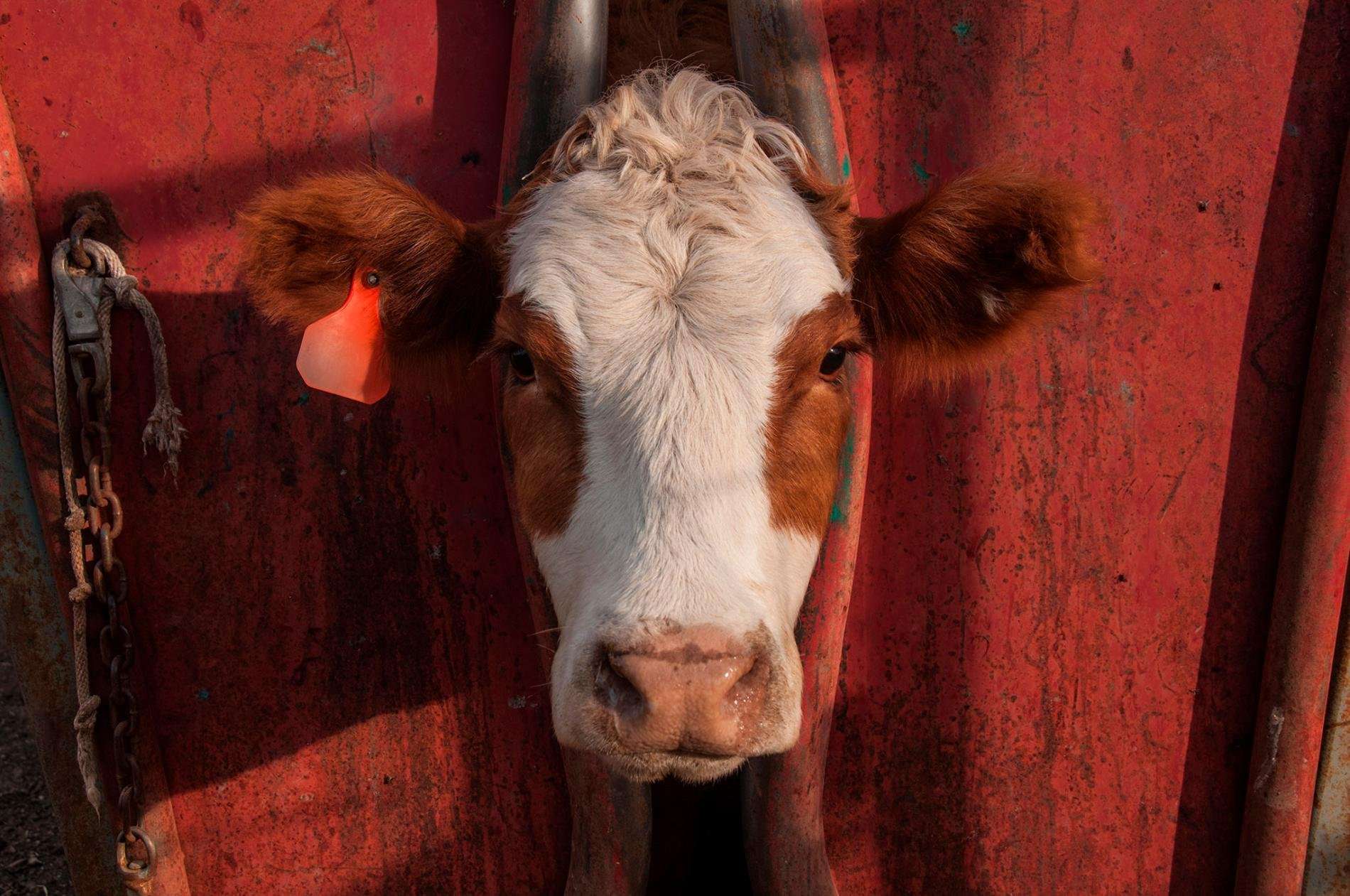Our passion for cheeseburgers isnât doing the planet any good. All those Holsteins and Jerseys and relationsâthe ultimate sources of burgers, T-bone steaks, milkshakes, and ice creamâare wreaking havoc with Earthâs climate. But it looks like thereâs a cure in sight, and it just might be seaweed. Specifically, a red alga known to scientists as Asparagopsis taxiformis.
A major environmental problem with cows is their insistence on spewing out methane, a greenhouse gas that packs, ton for ton, thirty times the disastrous punch of CO 2 . This isnât a deliberate plot on the part of Earthâs 1.5 billion cows: itâs the inevitable by-product of ruminant biology. Cows and other cud-chewing animals digest their cellulose-laden food with the help of stomach bacteria in a process called enteric fermentation, which is why they can live happily on grass. The end result of such microbial metabolism is methane, of which the average cow produces some 200 to 500 liters per day.
Climate 101: Causes and Effects The climate is certainly changing. But what is causing this change? And how does the rising temperature affect the environment, and our lives?
Actually, despite a lot of jokes about farting cows, the bulk of methane emissionsâ about 90 percentâcome from their slightly less impolite burps. According to the United Nations Food and Agriculture Organization (FAO), global livestock collectively burp and poot about seven gigatonnes (thatâs seven billion metric tons) of CO 2 -equivalents each year. About 14.5 percent of anthropogenic greenhouse gas emissions come from livestock. That is more than global car and airplane traffic emissions combined.
While sheep, goats, and buffalo (and giraffes and camels) all generate methane, 65 percent comes from cows. In a recent study, Ken Caldeira of the Carnegie Institution for Scienceâs Department of Global Ecology pointed out that eating a pound of beef causes more greenhouse warming than burning a gallon of gasoline. Multiply that by the one billion pounds of beef Americans consume each year just at McDonaldâs and it begins to add up fast.
An obvious solution to the problem, of course, is to simply give up raising cattle and eating beef. Gidon Eshel, professor of environmental physics at New Yorkâs Bard College, in a recent research paper published in the Proceedings of the National Academy of Sciences, calculated that each American who drops beef-eating saves us the annual emissions equivalent of burning 61 gallons of gas or 580 pounds of coal. Better yet, go vegan, since dairy cows not only produce more methane than beef cattle, but outnumber them by a ratio of 10 to 1 in the United States.
Or we could start adding a sprinkle of seaweed to livestock feed.
The crucial research, by Robert Kinley of CSIRO and Rocky De Nys, professor of aquaculture at Australiaâs James Cook University, and colleagues, involved testing some 20 different species of seaweed in artificial cow stomachsâthat is, a mix of rumen and microbes that mimics the behavior of a cow stomach in a bottle. When grass or feed is added to this in vitro tummy, fermentation takes place and the scientists are able to measure the resulting methane output. In the presence of Asparagopsis taxiformisâdescribed by De Nys as âa real stand-outâ among the tested seaweedsâ methane production was cut by 99 percent. Experiments in sheep showed that if dried Asparagopsis taxiformis seaweed made up just 2 percent of total feed, methane emissions drop by 70 percent. It can be added as a sprinkle, De Nys says, just as you might add a smattering of herbs to roast chicken.
Asparagopsis is so effective because it contains a chemical called bromoform (CHBr 3 ) that interferes with the microbial digestive enzymes responsible for methane manufacture. These results are hopeful both for the beleaguered environment and for the hungry public. Methane burped or shamefully otherwise expelled into the atmosphere is not only an environmental liability, but is wasted energy that could be better put to use increasing food productivity. Seaweed experiments in Canada were inspired by observations that seaside cattle, who periodically chowed down on storm-tossed seaweed, were both heftier and healthier than their inland relatives. Less belched-out methane, in other words, makes for more on-the-hoof meat.
About 14.5 percent of anthropogenic greenhouse gas emissions come from livestock. That is more than global car and airplane traffic emissions combined.
Unfortunately, seaweed isnât a quick fix for our atmospheric methane overdose. We just donât make enough. Scientists calculate that it would take some 6,000 hectares (about 15,000 acres) of seaweed farms to supply a mere 10 percent of Australiaâs 29 million cattle; to supply Americaâs 92 million would take over thirty times more. While seaweed farming is a rapidly growing global industry, itâs not yet up to such herculean demands.
Increasing legislation is now aimed at cutting methane emissions from livestock. Under the Obama administration, a 2014 Climate Action Plan called for cutting methane emissions from American cows by 20 percent by 2020; and in September of this year, Governor Jerry Brown of California also went after flatulent cows, ruling that their methanogenic behavior should be regulated âif a practical technology exists to reduce it.â

uid_2 on July 18th, 2017 at 15:19 UTC »
That, comma...
drsloth1138 on July 18th, 2017 at 11:11 UTC »
The hard part would be herding all those cows down to the beach.
RootJaden on July 18th, 2017 at 10:32 UTC »
This is the reason why it's not done everywhere already if anyone is wondering.